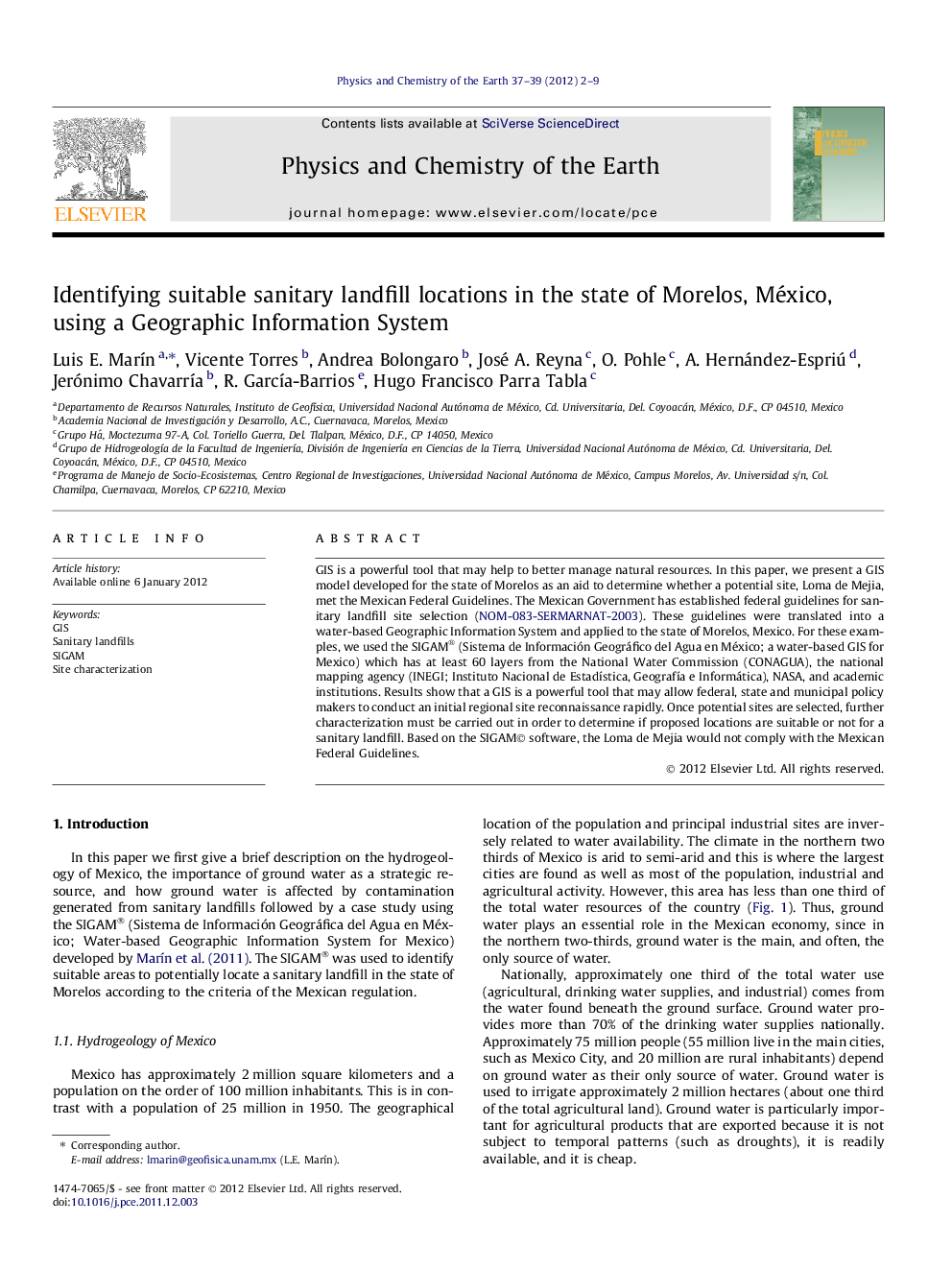| Article ID | Journal | Published Year | Pages | File Type |
|---|---|---|---|---|
| 4721179 | Physics and Chemistry of the Earth, Parts A/B/C | 2012 | 8 Pages |
GIS is a powerful tool that may help to better manage natural resources. In this paper, we present a GIS model developed for the state of Morelos as an aid to determine whether a potential site, Loma de Mejia, met the Mexican Federal Guidelines. The Mexican Government has established federal guidelines for sanitary landfill site selection (NOM-083-SERMARNAT-2003). These guidelines were translated into a water-based Geographic Information System and applied to the state of Morelos, Mexico. For these examples, we used the SIGAM® (Sistema de Información Geográfico del Agua en México; a water-based GIS for Mexico) which has at least 60 layers from the National Water Commission (CONAGUA), the national mapping agency (INEGI; Instituto Nacional de Estadística, Geografía e Informática), NASA, and academic institutions. Results show that a GIS is a powerful tool that may allow federal, state and municipal policy makers to conduct an initial regional site reconnaissance rapidly. Once potential sites are selected, further characterization must be carried out in order to determine if proposed locations are suitable or not for a sanitary landfill. Based on the SIGAM© software, the Loma de Mejia would not comply with the Mexican Federal Guidelines.
► The Mexican Federal Guidelines 083-SEMARNAT were translated into a GIS. ► This paper shows how a Water-based GIS was used to identify potential sites for the location of a sanitary landfill. ► GIS offers a powerful platform to improve natural resources management.
